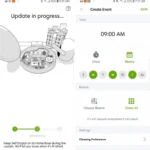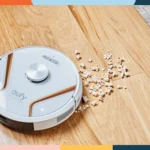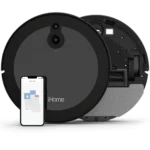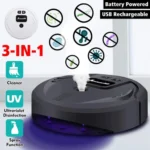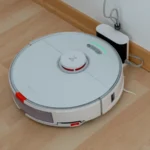As we embrace the convenience of smart home technology, the importance of keeping our gadgets in good condition cannot be overstated. One of the devices that require regular maintenance for optimal functionality is the smart vacuum cleaner. Although it can be tempting to rely solely on its efficiency, the truth is that without adequate safety features, automated cleaning can turn into a nightmare. This is where drop sensors come in. If you’re wondering how these sensors prevent damage to your smart vacuum cleaner and your home, read on to learn more.
What are Drop Sensors?
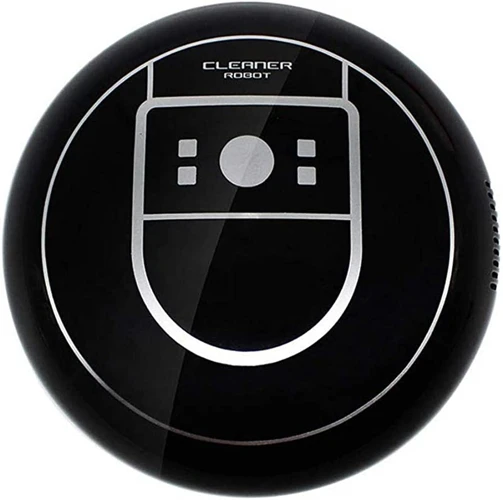
When it comes to smart vacuum cleaners, drop sensors are one of the most important components. These sensors allow the vacuum cleaner to navigate around your home without causing any damage to your belongings or the vacuum itself. But what exactly are drop sensors and how do they work? Let’s dive into the details and find out. For more information on other types of sensors used in smart vacuums, check out our article on anti-collision sensors.
How Does a Drop Sensor Work?
Drop sensors are an essential piece of technology in smart vacuum cleaners that prevent the device from falling off edges and ledges, which can cause damage to both the vacuum cleaner and surrounding belongings. Drop sensors work by detecting the distance between the smart vacuum cleaner and the floor below it.
The basic principle behind drop sensors is simple: a sensor emits an infrared light towards the floor, and then measures how long it takes for the light to bounce back. This time delay can be used to determine the distance between the smart vacuum cleaner and the floor.
To better understand how this works, take a look at the table below:
| Step | Process |
|---|---|
| Step 1 | The smart vacuum cleaner approaches an edge or drop-off. |
| Step 2 | The drop sensor emits an infrared light towards the floor below. |
| Step 3 | The infrared light reflects off the floor and returns to the sensor. |
| Step 4 | The sensor measures the time delay between the emission and return of the infrared light. |
| Step 5 | The smart vacuum cleaner uses this data to determine if it needs to change direction or stop to avoid the drop-off. |
There are different types of drop sensor technology used in smart vacuum cleaners to improve the accuracy and reliability of the sensor. For example, some smart vacuum cleaners use a combination of infrared and infrared diffuse reflection sensors to better detect different types of flooring and heights. The infrared diffuse reflection sensor emits a wider range of light, which allows it to detect subtle changes in floor height and texture that may not be detected with an infrared sensor alone.
Drop sensors are responsible for keeping smart vacuum cleaners safe and preventing damage to both the device and surrounding home furnishings. It is important to remember that regular maintenance and cleaning of drop sensors can help ensure their proper functioning and effectiveness. Additionally, should you encounter any issues with your smart vacuum cleaner’s drop sensors, troubleshooting guides are available to identify the root of the problem and provide potential solution.
Types of Drop Sensor Technology
Drop sensors are an important feature of today’s smart vacuum cleaners. These sensors work in different ways, using various technologies to detect drop-offs and avoid taking a tumble. Let’s take a look at some of the types of drop sensor technology that are commonly used in smart vacuum cleaners.
| Type of Technology | Description |
|---|---|
| Infrared Sensors | These sensors work by bouncing light off the surface. They measure the time it takes for the light to return and detect changes in distance. If a sensor detects a significant decrease in distance, it shuts off the motor to prevent the vacuum from falling. |
| Cliff Sensors | These sensors detect changes in the surface below the vacuum, looking for drops or cliffs. Sensors emit infrared signals or sonar waves to measure the distance, then stop the vacuum or redirect its course before it reaches the cliff or drop. |
| Gyroscopic Sensors | Gyroscopic sensors use rotating masses called gyroscopes to detect changes in orientation and movement in the vacuum cleaner. These sensors can detect sudden changes, such as falling off a ledge or taking a sharp turn, and respond accordingly. |
Each type of drop sensor technology has its pros and cons, and some sensors may be better suited for certain homes or environments than others. For example, infrared sensors are affordable and reliable, but they may not be effective on certain surfaces, like a dark or reflective surface. On the other hand, gyroscopic sensors are highly accurate but can be expensive, making them more common in high-end models.
Regardless of the type of sensor, each plays a crucial role in protecting both your vacuum cleaner and your home from damage. Understanding the capabilities of these sensors can help you make an informed decision when choosing a smart vacuum cleaner.
Why are Drop Sensors Important?
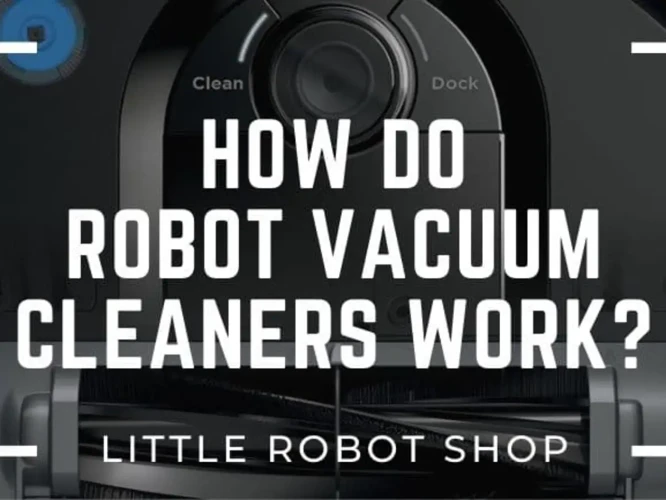
As we welcome more and more smart devices into our homes, it is crucial to ensure their safety and avoid any damages. Without the proper technology in place, a minor oversight, such as a step-down or slight height difference, can cause significant harm to your smart vacuum cleaner. This is where drop sensors come into play. They are an essential component of modern-day smart vacuum cleaners and play a vital role in keeping your home and device safe. In this article, we’ll explore the importance of drop sensors and how they work to protect your smart vacuum cleaner. We’ll also take a look at the various types of technologies and maintenance required to ensure optimal performance. Lastly, we’ll discuss what happens when drop sensors fail and the safety measures in place to prevent any harm. So let’s dive in! Don’t forget to check out our article on anti-collision sensors in the smart vacuum market and anti-collision sensors for flooring for more information on this topic!
Prevents Damage to Your Smart Vacuum Cleaner
Smart vacuum cleaners are designed to make our lives easier by cleaning our homes automatically, without any human intervention. However, these machines can sometimes cause damage to themselves or our belonging if they run into an obstacle or fall off a height. This is where drop sensors come into play, preventing extensive damage to your smart vacuum cleaner.
Here are a few ways drop sensors prevent damage to your smart vacuum cleaner:
- Prevents falls: Drop sensors detect when the vacuum cleaner is approaching a drop, such as a staircase or ledge, and prevent it from falling off. These sensors work in a way that enables smart vacuum cleaners to avoid falls and damage to the device or surrounding furniture.
- Minimizes collisions: Drop sensors can detect objects, such as walls and furniture, in the vacuum cleaner’s path, which can help the machine slow down or stop altogether. By minimizing collisions, drop sensors reduce the likelihood of damage to your smart vacuum cleaner.
- Improves navigation: With drop sensors in place, smart vacuum cleaners can navigate around your home with confidence, knowing that they are less likely to run into obstacles and cause damage. This results in a more efficient and effective cleaning process.
It is essential to note that drop sensors are not foolproof, and accidents can still happen. However, the technology is continuously improving, and newer models of smart vacuum cleaners have more advanced sensors to ensure maximum protection.
Protects Your Home and Belongings
Drop sensors not only save your smart vacuum cleaner from damage, but also protect your home and belongings. Accidents happen, and without drop sensors, a vacuum cleaner can fall from stairs, ledges, or other significant heights which can cause damage both to the cleaner and the surroundings. The impact from a falling robotic vacuum can break fragile objects, knock over ornaments, and even send heavier objects crashing to the floor causing dents and cracks.
However, with drop sensor technology integrated into your smart vacuum cleaner, you can avoid such unfortunate incidents. The sensor detects the sudden change in altitude and immediately sends signals to the robot to stop the movement and change direction. This makes it possible to avoid falls and collisions with walls or furniture, saving your possessions from damage.
Drop sensors help prevent the vacuum cleaner from getting stuck under low furniture or in tight spaces. This can protect your furniture, since the cleaner moving around and under furniture can potentially cause scratches and dents. With the drop sensor in place, the robot can sense when a clearance is too low and avoid going under it.
Drop sensors can save you time and money on repairs or replacement costs. It ensures that your vacuum cleaner works properly for a long time and avoids instances that could lead to operational malfunctions or breakdowns. By using a vacuum cleaner equipped with drop sensors, you can save yourself from costly repairs and replacements, while also keeping your household items safe.
Investing in a smart vacuum cleaner with drop sensor technology provides a safe and reliable cleaning experience for your home with minimal risk of damage to your belongings.
How do Drop Sensors Work in Smart Vacuum Cleaners?
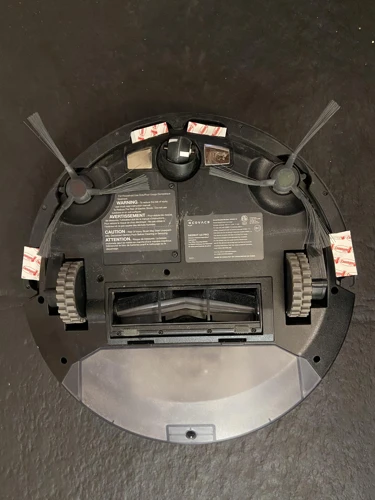
Smart vacuum cleaners are becoming an increasingly popular cleaning solution for many households. However, did you ever wonder how these devices know when to stop and turn around to avoid falling off a flight of stairs or any other type of edge? This is where drop sensors come into play. Drop sensors are an essential component of most smart vacuum cleaners, and in this section, we will discuss how they work and their importance in preventing damage to both the vacuum cleaner and your home. So, buckle up and get ready to learn how these small, yet critical sensors can make your life easier.
Adjusting to Different Surfaces and Heights
Smart vacuum cleaners are designed to move around a room and clean different surfaces, such as hardwood floors, carpets, and tiles. To ensure that the vacuum cleaner doesn’t fall off a step or ledge and get damaged, drop sensors are an essential component. An important feature of drop sensors is their ability to adjust to different surfaces and heights, ensuring that the vacuum cleaner can navigate around a room safely.
Some of the ways drop sensors help smart vacuum cleaners adjust to different surfaces and heights are:
- Optical Sensors: Optical sensors use infrared light to detect a change in the distance between the smart vacuum cleaner and the surface it’s cleaning. These sensors can detect if the vacuum cleaner is cleaning a carpeted area or a hard surface and can adjust its cleaning accordingly.
- Cliff Sensor: Some smart vacuum cleaners come with a cliff sensor that uses sonar to detect cliffs, stairs, or any other dangerous obstacles that could cause the vacuum cleaner to fall. These sensors can detect even the slightest changes in surface heights, so it can adjust its cleaning direction accordingly, avoiding hazardous areas.
- Gyro Sensor: Gyro sensors help the vacuum cleaner to navigate around the room without bumping into walls or furniture. These sensors use a gyroscope to measure orientation and maintain the vacuum cleaner’s direction and movement. When the vacuum cleaner senses a wall, it slows down and gently moves around it.
With these sensors working together, a smart vacuum cleaner can efficiently adjust to different surfaces and heights, making it effective in cleaning your home.
Regular maintenance is necessary to ensure the maximum effectiveness of these sensors. Any obstruction or dirt build-up on the sensors can affect their ability to detect changes in height accurately. Smart vacuum cleaners also have a regular cleaning schedule that you can customize according to your preference, further ensuring the cleaning of every surface in your home.
The ability of the drop sensors to adjust to different surfaces and heights ensures that the smart vacuum cleaners can clean your home effectively and efficiently, while also preventing any damage. Regular maintenance of both the sensors and the vacuum cleaner is essential for maximum effectiveness, and adherence to a regular cleaning schedule can help keep your smart vacuum cleaner in optimal condition for longer periods.
Regular Maintenance for Maximum Effectiveness
To ensure that your smart vacuum cleaner’s drop sensors are working at maximum effectiveness, regular maintenance is key. Here are some tips for keeping your drop sensors in optimal condition:
- Clean the sensors: Dust and debris can accumulate on the drop sensors, leading to inaccurate readings or even sensor failure. Take a soft cloth or brush and gently clean the sensors on a regular basis to prevent this buildup.
- Check for physical damage: Over time, the drop sensors can become scratched, cracked or otherwise physically damaged. Regularly inspecting the sensors can help you catch any issues early on and prevent further damage.
- Calibrate the sensors: If you notice that your vacuum cleaner is not accurately detecting drop-offs, it may be time to calibrate the sensors. Follow the manufacturer’s instructions for calibrating the sensors to ensure they are properly aligned.
- Replace faulty sensors: If you notice that your drop sensors are not working as they should, it may be time to replace them. Most manufacturers offer replacement sensors that can be easily installed.
Regular maintenance of your smart vacuum cleaner’s drop sensors can ensure that they continue to function effectively and prevent damage to your property. By following these tips, you can keep your vacuum cleaner running smoothly and efficiently over the long-term.
What Happens When Drop Sensors Fail?
As much as we rely on technology to make our lives easier, we can never be certain that it will work perfectly all the time. The same applies to drop sensors in smart vacuum cleaners, which can sometimes fail unexpectedly. In such situations, it is important to understand what happens when these vital sensors stop working. We’ll delve into the potential consequences of drop sensor failure and explore the measures in place to avoid any accidents. Join us as we unravel this complex issue.
Safety Measures in Place
With any technology, there is always the potential for failure. However, when it comes to drop sensors in smart vacuum cleaners, manufacturers have put several safety measures in place to prevent accidents and damage.
One of the main safety measures is the use of multiple sensors in the vacuum cleaner. These sensors work together to detect drops or changes in height, meaning that if one sensor fails, the others can still detect danger and trigger the necessary action.
Another safety feature is the use of barriers or Virtual Walls. These barriers are set up by the user to create boundaries for the vacuum cleaner to follow. By setting up these barriers, the user can prevent the vacuum cleaner from falling off ledges or stairs, reducing the likelihood of sensor failure resulting in damage or injury.
Additionally, many smart vacuum cleaners have built-in safety protocols that will stop the vacuum cleaner from continuing to work if a drop sensor fails. This is essential in preventing damage to the machine or any surrounding objects, and it’s a significant safety feature that provides peace of mind for many smart vacuum cleaner owners.
Ultimately, while it is always possible for technology to fail, manufacturers of smart vacuum cleaners have taken extensive measures to prevent accidents and damage. By investing in a vacuum cleaner with drop sensors and virtual walls, homeowners can rest assured that these devices will work together to keep their home and belongings safe.
Common Causes of Sensor Failure
Millions of people rely on their smart vacuum cleaners to clean their homes effectively and efficiently. Drop sensors are an essential part of a smart vacuum cleaner’s safety features, preventing damage to the cleaner and your belongings while it’s in use. However, like any technology, drop sensors can fail, leading to potential problems. Here are some common causes of sensor failure:
- Dirt and Dust Accumulation: The drop sensors in a smart vacuum cleaner are sensitive electronic components that require regular cleaning to function correctly. Dirt, dust, and debris can accumulate on the sensors and interfere with their ability to detect drops.
- Physical Damage: Smart vacuum cleaners can take a beating, particularly if they have to navigate around furniture and other obstacles. Physical damage to the drop sensors can cause them to malfunction or fail entirely.
- Manufacturing Defects: Although uncommon, manufacturing defects can cause drop sensors to fail prematurely. In such cases, the vacuum cleaner may require repairs or replacement.
- Software Malfunctions: The software that controls the smart vacuum cleaner’s drop sensors may sometimes malfunction, causing the sensors to fail. Regular software updates can help prevent this issue.
- Electrical Issues: Electrical problems can also cause drop sensors to fail. Power surges, short circuits, and other electrical problems can interfere with the sensors’ ability to detect drops and other obstacles.
It is important to keep in mind that drop sensor failure is not a common issue, but rather a potential risk. Regular maintenance and cleaning of the smart vacuum cleaner’s drop sensors can go a long way in preventing sensor failure. If your smart vacuum cleaner is not working correctly, it is crucial to get it checked by a professional technician.
Conclusion
In conclusion, drop sensors are an essential component of any smart vacuum cleaner. These sensors work by detecting gaps and changes in surfaces to prevent the vacuum from falling off stairs or ledges. By doing so, they protect your vacuum cleaner from damage and your home from potential accidents.
It is important to note that drop sensors come in different types, including infrared sensors and acoustic sensors. While infrared sensors use light waves to detect changes in surfaces, acoustic sensors use sound waves. Therefore, it is important to select a vacuum cleaner with the right type of sensor technology that fits your specific needs.
To ensure maximum effectiveness, regular maintenance of the drop sensors is necessary. This includes cleaning the sensors and surrounding areas, as well as checking for any damage or malfunctioning. In case of malfunction or failure, most smart vacuum cleaners have safety measures in place, and common causes of sensor failure can be prevented with proper maintenance.
Overall, the importance of drop sensors in smart vacuum cleaners cannot be overstated. By preventing damage to your vacuum cleaner and ensuring your safety, these sensors make cleaning your home effortless and stress-free. Choose a vacuum cleaner with reliable drop sensor technology, and don’t forget to maintain it regularly for optimal performance.
Frequently Asked Questions
How do drop sensors prevent damage to your smart vacuum cleaner?
Drop sensors are designed to detect stairs or other high drop-off points in order to prevent the vacuum cleaner from accidentally falling off and damaging itself.
What are the types of drop sensor technology?
The two main types of drop sensor technology are infrared and sonar. Infrared sensors use a beam of light to detect edges, while sonar sensors use sound waves.
Do all smart vacuum cleaners have drop sensors?
No, not all smart vacuum cleaners are equipped with drop sensors. It’s important to check the product specifications before purchasing to ensure that they include this feature.
What happens if a smart vacuum cleaner doesn’t have drop sensors?
Without drop sensors, a smart vacuum cleaner could potentially fall down stairs or off ledges, causing damage to the machine and potentially harming pets or people in the surrounding area.
Can drop sensors adjust to different surfaces and heights?
Yes, drop sensors are designed to adjust to different types of surfaces and heights, allowing for safe and effective cleaning in a variety of environments.
How often should drop sensors be maintained?
It is recommended to clean drop sensors after each use to ensure maximum effectiveness. If the sensors appear dirty or damaged, they should be replaced as soon as possible.
Can drop sensors ever fail?
Yes, drop sensors can fail for a variety of reasons, including dirt or debris build-up on the sensor, a malfunction in the sensor itself, or damage caused by the vacuum cleaner accidentally falling down stairs.
What safety measures are in place if drop sensors fail?
Most smart vacuum cleaners include a variety of safety features, such as bump sensors, which prevent the machine from colliding with objects in its path, and automatic shut-off in the event of a malfunction.
What are some common causes of drop sensor failure?
Some common causes of drop sensor failure include damage caused by falls down stairs, damage caused by pets or children playing with the machine, or simple wear and tear over time.
Can drop sensors be repaired?
In some cases, drop sensors can be repaired or replaced by a qualified technician. However, it is often more cost-effective to simply purchase a new vacuum cleaner if the sensors are extensively damaged.

